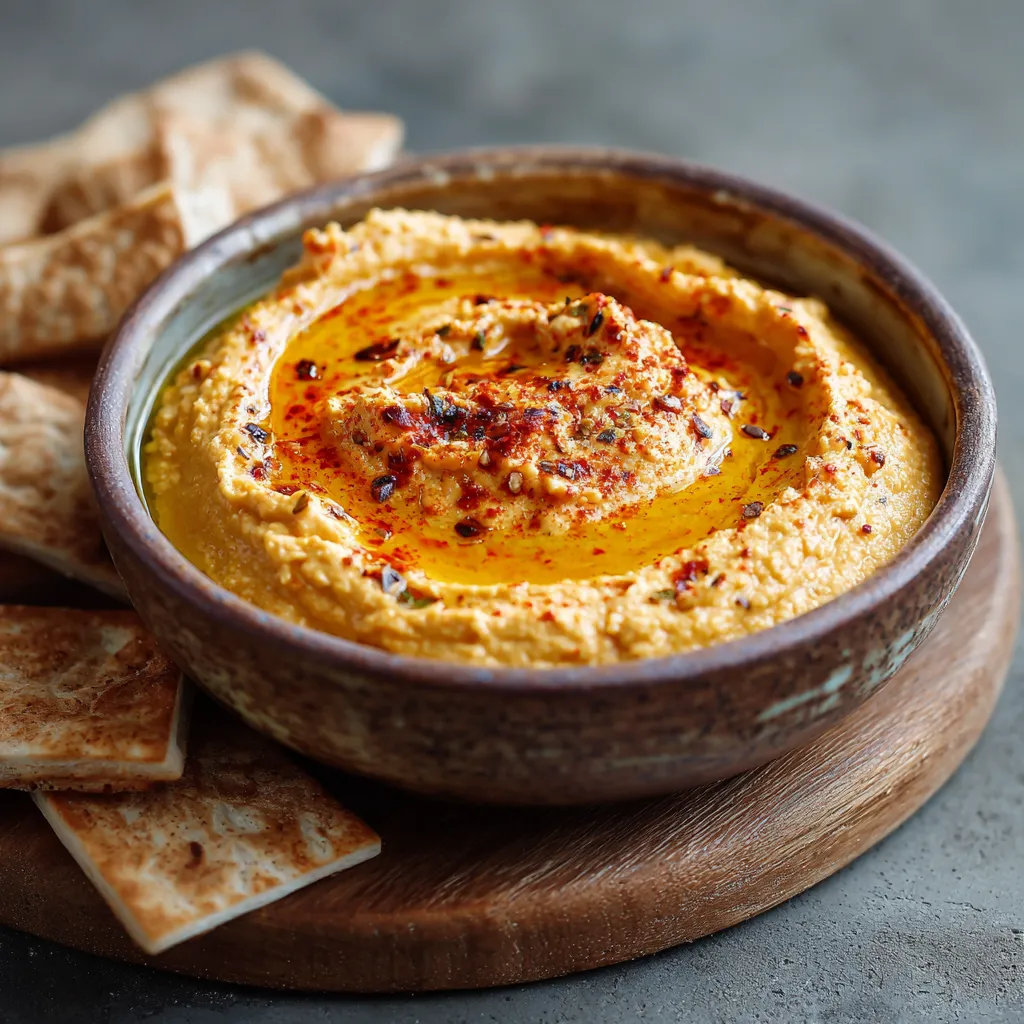Hummus has become a global favorite for good reason—it’s creamy, versatile, and packed with nutrients. Traditionally, it’s made with chickpeas, garlic, lemon, olive oil, and tahini (a sesame seed paste). While tahini adds a rich nutty flavor, it’s not always a pantry staple, and some people find it too bitter or heavy. Others may avoid it due to sesame allergies.
The good news? You don’t need tahini to make an incredible hummus! This tahini-free hummus recipe is smooth, flavorful, and incredibly easy to whip up. Whether you’re hosting a party, looking for a healthy snack, or meal prepping for the week, this dip will quickly become a go-to favorite. Plus, it’s naturally vegan, gluten-free, and high in plant-based protein.
Why Make Hummus Without Tahini?
There are plenty of reasons why you might want to skip tahini in your hummus:
- Allergy-friendly: Since tahini is made from sesame seeds, it’s not suitable for anyone with sesame allergies.
- Lighter flavor: Without tahini, the hummus tastes fresher and allows the chickpeas, garlic, and lemon to shine through.
- Budget-friendly: Tahini can be expensive or hard to find in some areas, but this recipe uses common pantry ingredients.
- Customizable: A tahini-free base is perfect for experimenting with additional flavors like roasted red peppers, fresh herbs, or spices.
Skipping tahini doesn’t mean sacrificing creaminess or taste. In fact, many people prefer this lighter version because it feels less dense but still satisfying.
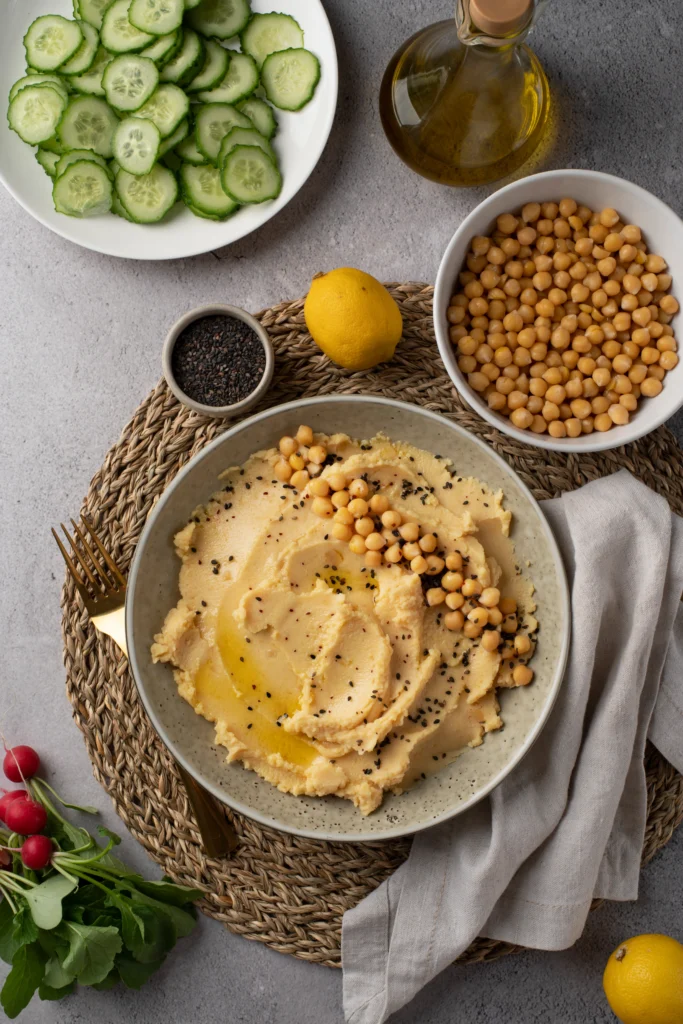
Ingredients You’ll Need
This recipe calls for simple, wholesome ingredients you probably already have on hand.
- 1 can (15 oz) chickpeas, drained and rinsed (or 1½ cups cooked chickpeas)
- 2–3 tablespoons olive oil, for richness and smooth texture
- 2–3 tablespoons fresh lemon juice, for brightness
- 1 garlic clove, raw or roasted, depending on your flavor preference
- 2–4 tablespoons water, to thin and achieve desired creaminess
- ½ teaspoon ground cumin (optional, for warmth and depth)
- Salt, to taste
Optional garnishes: olive oil drizzle, paprika, chopped parsley, sesame seeds (if you’re not avoiding them), or even a sprinkle of za’atar.
Step-by-Step Instructions
Prep the chickpeas
Drain and rinse canned chickpeas thoroughly. For an extra creamy texture, remove the skins by gently pinching them off, though this step is optional.
Combine the base ingredients
In a food processor or blender, add chickpeas, garlic, lemon juice, olive oil, cumin (if using), and a generous pinch of salt.
Blend until creamy
Process the mixture until smooth, pausing to scrape down the sides. Add water one tablespoon at a time to loosen the hummus until you reach your desired consistency.
Taste and adjust
Taste the hummus and adjust seasonings. You may want more lemon juice for tang, more garlic for punch, or a touch more salt.
Garnish and serve
Transfer to a serving bowl, drizzle with olive oil, and sprinkle with paprika or fresh herbs. Serve immediately or refrigerate for up to 5 days.
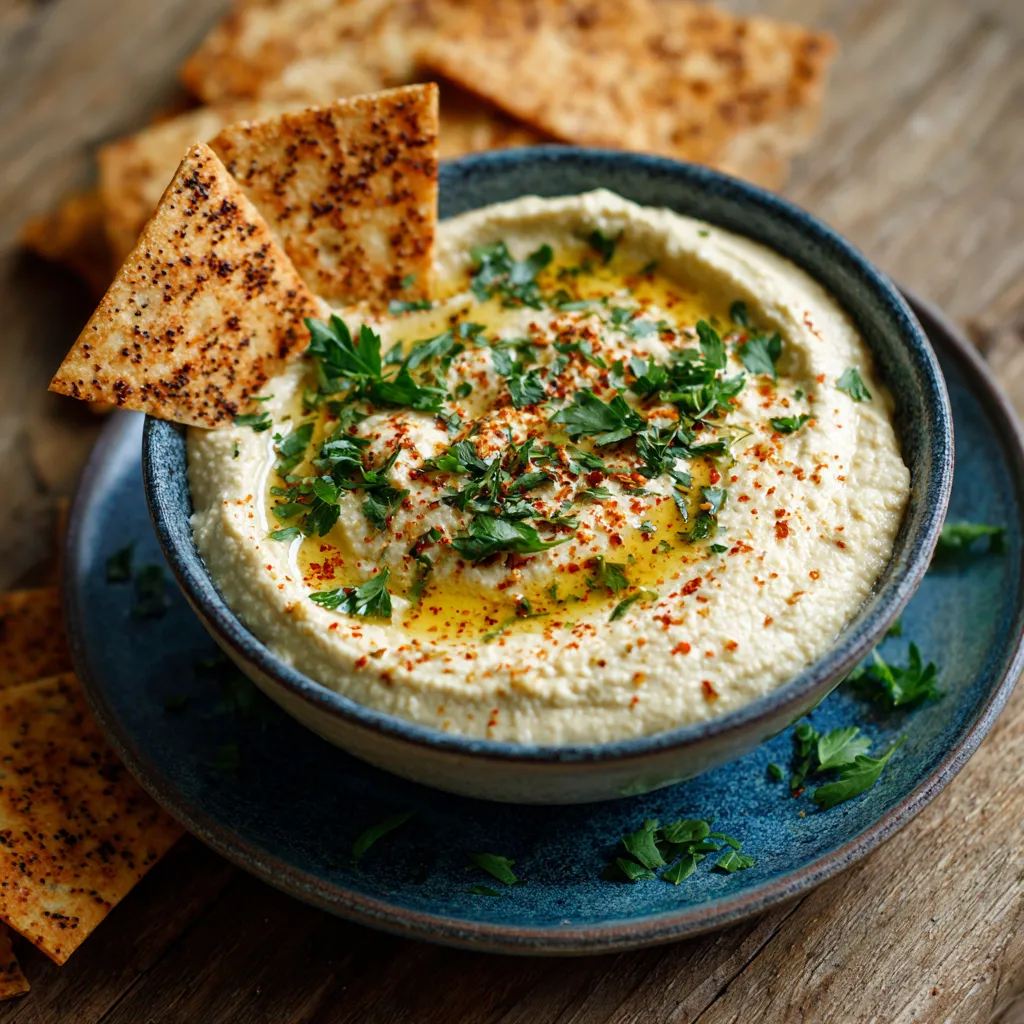
Serving Suggestions
One of the best things about hummus is its versatility. This tahini-free version is no exception. Here are some tasty ways to enjoy it:
- Classic dip: Pair with raw veggies such as carrots, cucumber, celery, or bell peppers for a nutrient-dense snack.
- With bread or crackers: Spread on pita bread, flatbreads, or crunchy crackers for a satisfying bite.
- As a sandwich spread: Swap out mayo or butter and use hummus on wraps, sandwiches, or toast.
- In grain bowls: Add a dollop of hummus to rice or quinoa bowls for extra protein and creaminess.
- Party platter star: Include it as part of a mezze spread with olives, roasted vegetables, and fresh herbs.
The possibilities are endless—you might even find yourself reaching for hummus daily as a healthy, no-fuss addition to meals.
Tips and Variations
Roasted garlic hummus: Swap raw garlic for roasted for a sweeter flavor.
Spicy hummus: Add chili flakes, cayenne, or hot sauce.
Herb hummus: Blend in parsley, cilantro, or basil.
Roasted red pepper hummus: Adds sweetness and vibrant color.
Extra creamy: Replace some water with Greek yogurt (not vegan).
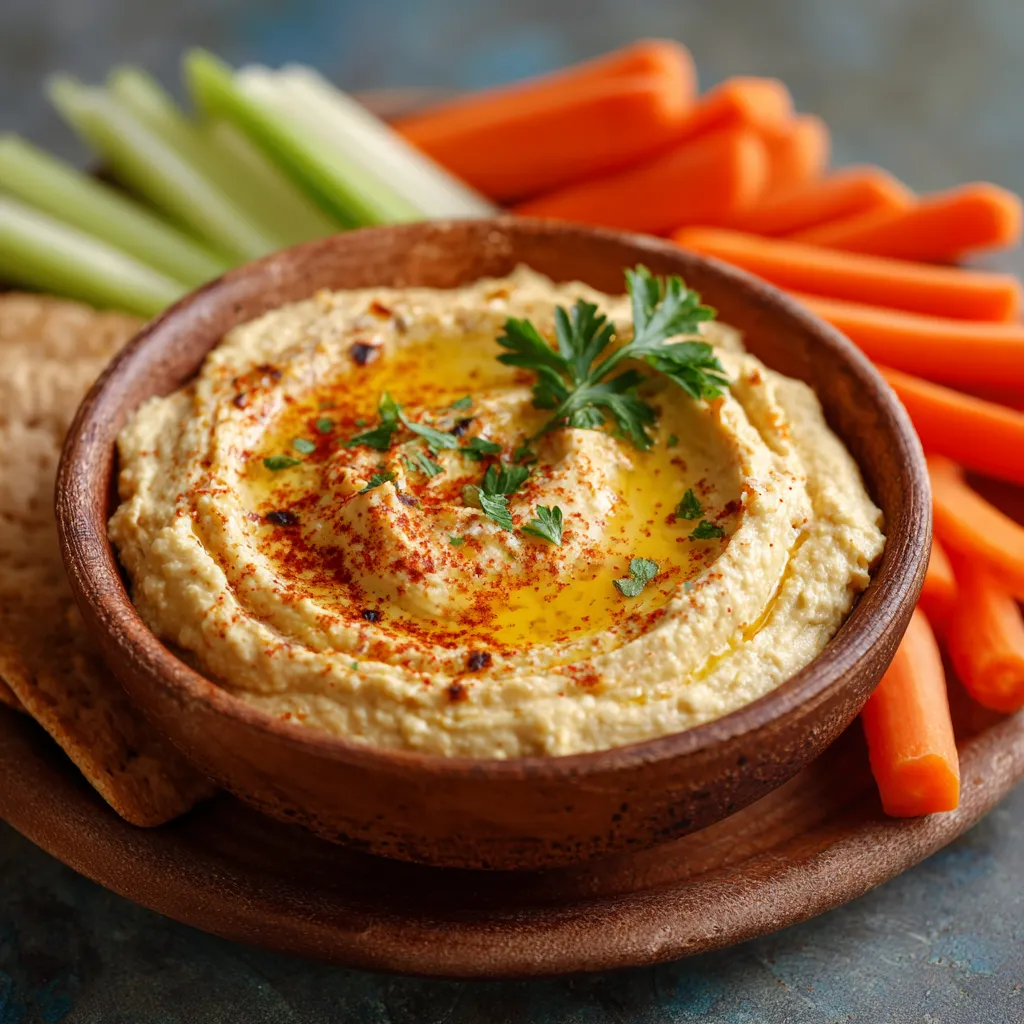
Nutrition Breakdown (per ¼ cup serving)
- Calories: 120 kcal
- Protein: 4 g
- Carbohydrates: 14 g
- Fiber: 4 g
- Fat: 6 g
- Saturated Fat: 1 g
- Sugar: 1 g
- Sodium: 150 mg
This tahini-free hummus is not only flavorful but also nutrient-dense, making it a perfect guilt-free snack or meal addition.
FAQ About : Tahini-Free Hummus
1. Can I make hummus without tahini?
Yes! This recipe is designed to be tahini-free. You’ll still get a creamy, flavorful hummus by using chickpeas, olive oil, lemon juice, and garlic.
2. What can I use instead of tahini in hummus?
You can substitute tahini with plain Greek yogurt, sunflower seed butter, cashew butter, or even a little extra olive oil. Each option will slightly change the flavor and texture.
3. How do I make hummus extra smooth?
For ultra-creamy hummus, peel the skins off the chickpeas before blending. You can also blend the chickpeas with lemon juice and garlic first, then add oil and water gradually for a silky texture.
4. How long does homemade hummus last?
Stored in an airtight container in the refrigerator, tahini-free hummus lasts up to 5 days. Always give it a stir before serving.
5. Can I freeze hummus?
Yes! Hummus freezes well for up to 3 months. Store in freezer-safe containers, leaving some space at the top for expansion. Thaw overnight in the fridge and stir before serving.
6. Is hummus without tahini still healthy?
Absolutely. It’s rich in plant-based protein, fiber, and healthy fats. Skipping tahini slightly reduces fat and calories, making it a lighter option.
7. What can I serve with tahini-free hummus?
It pairs perfectly with raw veggies, pita bread, crackers, sandwiches, or as a topping for grain bowls and salads.
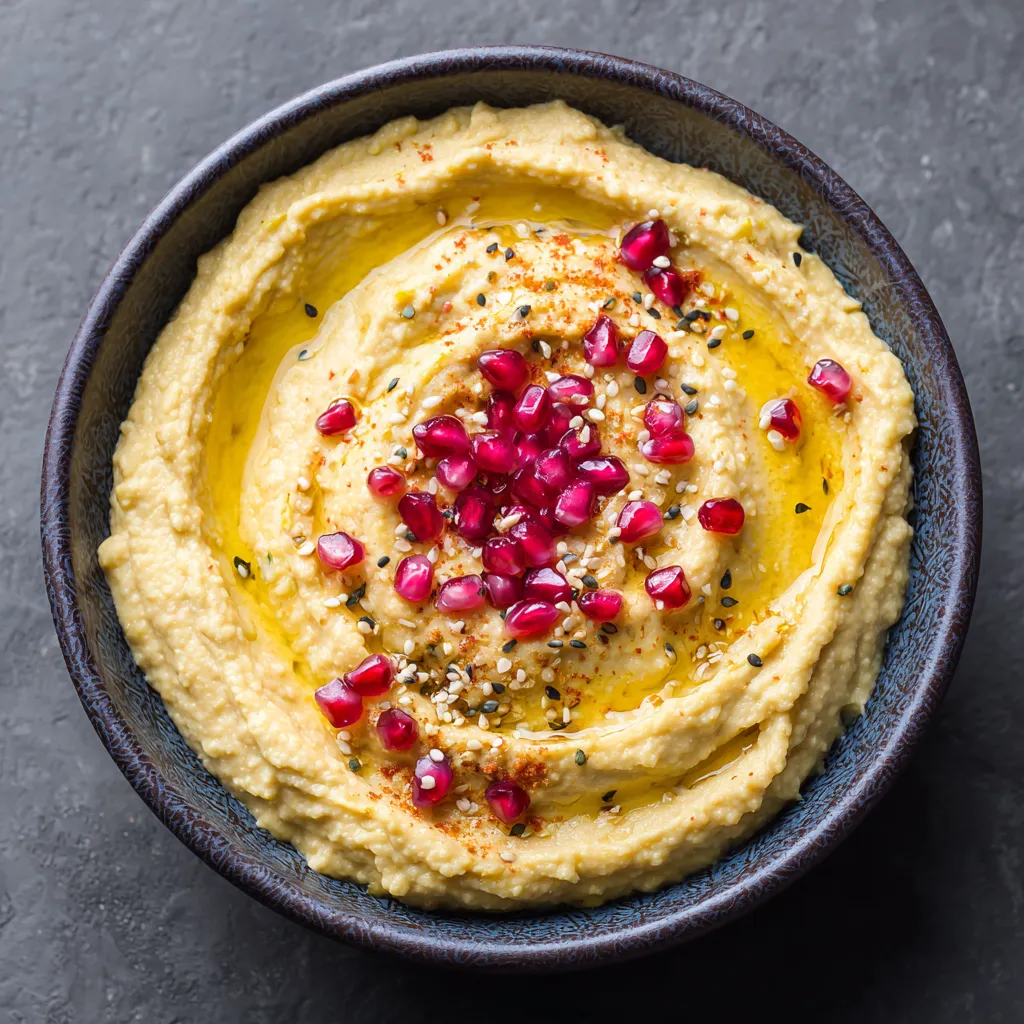
Table of Contents
https://labelrecipes.com/quick-and-easy-bang-bang-shrimp-recipe-for-any/
https://www.thewholesomedish.com/simple-hummus-without-tahini/

